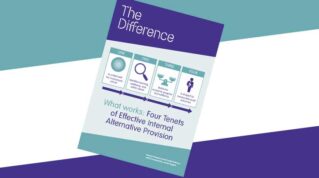Suspensions of pupils from school soared by 40 per cent last autumn, with permanent exclusions also up 25 per cent.
Data published by the Department for Education this morning shows there was a suspension rate of 4.13 in the autumn term of 2023-24, equivalent to 413 suspensions per 10,000 pupils.
This is up from 2.96 the year before, and almost double the pre-pandemic rate of 2.17.
The number of suspensions also increased year-on-year from 247,366 to 346,279.
The suspension rate for pupils eligible for free school meals was four times that of those not eligible. Year 9 had the highest suspension rate, followed by year 10.

The rate of permanent exclusion also increased from 0.04 in autumn 2022 to 0.05 last autumn, an increase of 25 per cent. The number of permanent exclusions increased from 3,104 to 4,168.
Government publishes exclusion data on a termly basis. Today’s figures are the first of the last academic year.
It follows widespread reports of more challenging pupil behaviour in schools following the Covid pandemic.
More suspensions, more frequently
The DfE said in its report that “there are more pupils being suspended, and more frequently”.
Forty-six per cent of suspensions last autumn were for one day or less. However, looking at cumulative days missed over the term, 35,800 pupils who were suspended missed over five days, up by 46 per cent year on year, and 12,600 missed over 10, up by 59 per cent.
The DfE also said that “since autumn term 2021-22, the number of pupils who are suspended multiple times has been increasing”.
Last autumn, 59 per cent were suspended once, 32 per cent two to four times and nine per cent five or more times in the term.
The most common reason for suspensions was persistent disruptive behaviour, accounting for 50 per cent of reasons given. This was followed by verbal abuse or threatening behaviour against an adult (16 per cent) and physical assault of a pupil (13 per cent).
Secondary exclusions soar
The majority of permanent exclusions were by secondary schools (87 per cent), and the rate of secondary exclusions rose by 43 per cent between autumn 2022 and 2023.
Again, persistent disruptive behaviour was the most common reason, accounting for 36 per cent of all reasons given. This was followed by physical assault against a pupil (16 per cent) and physical assault against an adult (13 per cent).
Year 10 had the highest rate of permanent exclusions.

Pepe Di’Iasio, general secretary of the Association of School and College Leaders, said “there is clearly a very serious problem facing schools with rising incidents of challenging behaviour and in particular persistent disruptive behaviour”.
“This has become a great deal worse since the pandemic where many children experienced disruption to their education and isolation that are continuing to have a lasting impact.
“The whole system is teetering on the brink of collapse and the government must show urgency in addressing these problems.”
















Senior teams and MAT seniors are simply not willing to deal with low level behaviour or even engage in conversations so here we are…quite simply, it’s on them.